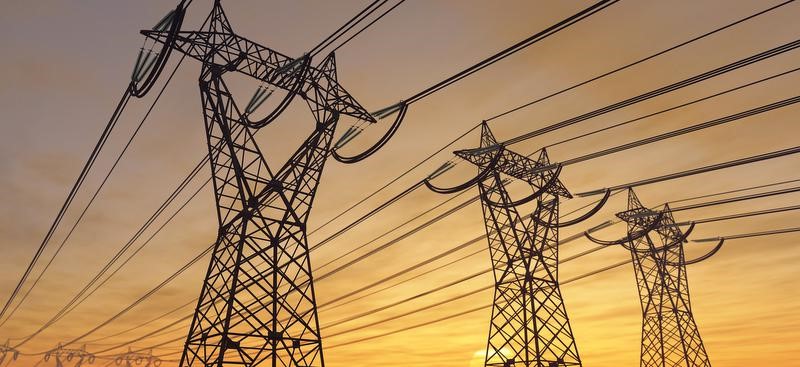Description

Disclaimer: Copyright infringement not intended.
Context
- Electricity transmission plays a critical role in the power system by facilitating the movement of electrical energy from power plants to distribution networks.
- Electric power transmission is complex due to its reliance on multiple phases of electric current and factors like voltage, impedance, and frequency.
- This complexity underlines its significance, as electricity transmission serves as a foundational element for the development of modern nations, as emphasized by India's first Prime Minister Jawaharlal Nehru during his visit to the Bhakra Nangal Dam site in 1954.
Details
Introduction to Electricity Transmission
- Electricity transmission is the process of moving electrical power from generating sources, such as power plants or renewable energy installations, to distribution networks that supply electricity to homes, businesses, and industries.
Components of Electricity Transmission:
- Transmission Lines: These are the conductors that carry electrical energy from the generation source to the distribution networks. They can be overhead lines or underground cables.
- Substations: These facilities help control the voltage levels and facilitate the transfer of electricity between different transmission networks.
- Transformers: These devices are used to increase or decrease the voltage of electricity for efficient transmission and distribution.
- Switching Equipment: These devices enable the control of the flow of electricity within the transmission network.
Transmission Network Structure:
- The electricity transmission network is structured into various hierarchical levels, including extra-high-voltage (EHV) transmission systems that carry bulk power over long distances and lower voltage systems that distribute power locally to consumers.
- Transmission towers are essential for supporting transmission lines over long distances.
- Equipped with insulators, circuit-breakers, arresters, and dampers, these towers ensure the safety and stability of the transmission system.
- Substations, including collector, converter, and distribution substations, manage the flow, frequency, and voltage between different transmission lines, enabling smooth and controlled electricity transfer.

AC (Alternating Current) and DC (Direct Current) Transmission:
DC Transmission:
- Direct current transmission has gained prominence due to its lower line losses over long distances and its ability to connect asynchronous grids and integrate renewable energy sources.
AC Power Transmission:
- Alternating current is the most common form of electricity transmission, used for long-distance transmission due to its ability to be easily converted to different voltage levels.
- Three-phase AC is the most prevalent form of power transmission, where the voltage changes polarity cyclically.
- The AC frequency determines the rate at which the voltage changes polarity in the three-phase AC system.
- In this system, each wire carries an AC current in a different phase, ensuring efficient power transfer to consumers.
- For instance, the world's largest wide-area synchronous grid covers Azerbaijan, Belarus, Georgia, Kazakhstan, Kyrgyzstan, Mongolia, and Russia, underlining the significance of interconnected transmission networks on a global scale.
Transmission System Operation and Control:
- Load Flow Analysis: This helps ensure that the power generated matches the power consumed at any point in the system.
- Voltage Control: Maintaining voltage levels within acceptable limits is crucial to ensure the reliable operation of the transmission system.
- Frequency Control: Maintaining a stable frequency is essential for the proper functioning of the interconnected power system.
Grid Operations and Management
- National grids incorporate power production, transmission, and distribution to meet the diverse energy needs of various regions.
- Storage facilities and backup power sources are crucial for managing surplus energy and meeting demand during emergencies.
- Grids ensure synchronous operation among connected generators, maintaining consistent AC frequency to prevent widespread power failures and disruptions in the electricity supply.
- The robust operation of these grids, such as the North Chinese State Grid with a connected capacity of 1,700 GW, underscores the importance of effective grid management on a large scale.
Challenges in Electricity Transmission
- Grid Congestion: Limited transmission capacity can lead to congestion and restrict the flow of power.
- Grid Stability: Ensuring the stability of the transmission network, especially with the integration of renewable energy sources, presents a significant challenge.
- Grid Resilience: Addressing the vulnerability of the transmission network to natural disasters, cyber-attacks, and physical damage is crucial for ensuring continuous power supply.
Transmission Efficiency and Loss
- Transmission efficiency is optimized when current is reduced and voltage is increased, as energy loss during transmission increases with the square of the current but corresponds linearly with the voltage.
- Transformers are instrumental in achieving this, stepping up voltage for transmission and stepping it down before distribution.
- Cables used in transmission still experience some resistance, leading to energy loss, which can be mitigated by using thicker cables, albeit at a higher cost.
- Additionally, longer transmission distances contribute to lower transmission costs.

Recent Developments and Future Trends
- Integration of Renewable Energy: The transmission system is adapting to accommodate the increasing penetration of renewable energy sources such as solar and wind power.
- Smart Grid Technologies: Advanced monitoring and control technologies are being implemented to enhance the efficiency and reliability of the transmission system.
- Energy Storage Integration: The incorporation of energy storage systems into the transmission network is becoming increasingly important for grid stability and balancing variable energy sources.
|
PRACTICE QUESTION
Q. Discuss the fundamentals of electricity transmission, highlighting the complexities associated with multiple phases of electric current, voltage, impedance, and frequency. (250 Words)
|














